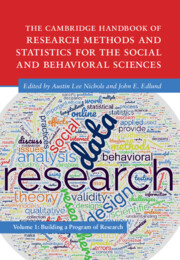 The Cambridge Handbook of Research Methods and Statistics for the Social and Behavioral Sciences
The Cambridge Handbook of Research Methods and Statistics for the Social and Behavioral Sciences Book contents
- The Cambridge Handbook of Research Methods and Statistics for the Social and Behavioral Sciences
- Cambridge Handbooks in Psychology
- The Cambridge Handbook of Research Methods and Statistics for the Social and Behavioral Sciences
- Copyright page
- Dedication
- Contents
- Figures
- Tables
- Contributors
- Preface
- Part I From Idea to Reality: The Basics of Research
- Part II The Building Blocks of a Study
- 9 Participant Recruitment
- 10 Informed Consent to Research
- 11 Experimenter Effects
- 12 Debriefing and Post-Experimental Procedures
- Part III Data Collection
- Part IV Statistical Approaches
- Part V Tips for a Successful Research Career
- Index
- References
10 - Informed Consent to Research
from Part II - The Building Blocks of a Study
Published online by Cambridge University Press: 25 May 2023
- The Cambridge Handbook of Research Methods and Statistics for the Social and Behavioral Sciences
- Cambridge Handbooks in Psychology
- The Cambridge Handbook of Research Methods and Statistics for the Social and Behavioral Sciences
- Copyright page
- Dedication
- Contents
- Figures
- Tables
- Contributors
- Preface
- Part I From Idea to Reality: The Basics of Research
- Part II The Building Blocks of a Study
- 9 Participant Recruitment
- 10 Informed Consent to Research
- 11 Experimenter Effects
- 12 Debriefing and Post-Experimental Procedures
- Part III Data Collection
- Part IV Statistical Approaches
- Part V Tips for a Successful Research Career
- Index
- References
Summary
This chapter focuses on informed consent, the cornerstone of conducting ethical human subjects research. It presents a brief history of the origins of informed consent to research and reviews codes, guidelines, and regulations that have been established in response to ethical violations carried out in the name of science. The chapter reviews the essential elements of consent (i.e., intelligence, knowingness, and voluntariness) and discusses challenges that researchers may encounter within each of these areas. Importantly, it approaches consent as an ongoing process rather than a one-time-event and presents practical and empirically supported strategies that researchers can apply to assess and enhance individuals’ capacity, understanding, and autonomy as it pertains to research participation. Additional topics discussed include assent to research that involves children, electronic and multimedia consent, and consent to research using biospecimens.
- Type
- Chapter
- Information
- The Cambridge Handbook of Research Methods and Statistics for the Social and Behavioral SciencesVolume 1: Building a Program of Research, pp. 202 - 223Publisher: Cambridge University PressPrint publication year: 2023
